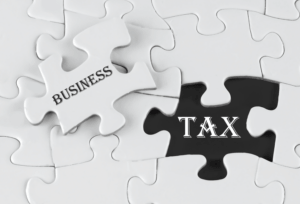
Managing financial data can quickly become overwhelming, especially when calculating your cost of goods sold (COGS). The COGM of $30,000 represents the total cost of goods completed and ready to sell during the period. This is key for calculating your cost of goods sold (COGS) and analyzing your production efficiency. The beginning WIP is what’s left unfinished from the previous period, while the ending WIP is what’s still in progress after finished goods are accounted for. Most balance sheet manufacturers aim to keep ending WIP low–it frees up cash, cuts taxes, and makes accounting a whole lot easier.
Understanding the Cost of Goods Manufactured: Formula, Components, Examples & Importance
Every business owner must know and understand every aspect of their company, including the key metrics that help determine how well the business is fairing. This means that when it comes to managing your manufacturing accounting, all those numbers will already be there and ready to go. You are required to calculate the cost of goods manufactured and also per unit cost. Based on the above information, you are required to calculate the cost of goods manufactured. Deskera People is a simple tool for taking control of your human resource management functions.
- This, in turn, influences your pricing strategy, profitability analysis, and even inventory management.
- For example, if you started the period with $5,000 worth of WIP inventory and ended with $3,000, you need to account for the $2,000 difference.
- COGM is assigned to units in production and is inclusive of WIP and finished goods not yet sold, whereas COGS is only recognized when the inventory in question is actually sold to a customer.
- We’ve already explored the formula and critical components of COGM, but let’s consider the practical example as well.
- Another option is to use dedicated COGS tracking software, such as Craftybase.
- Typically, businesses whose principal line of business is manufacturing create a separate schedule to calculate the cost of goods manufactured to determine their cost-effectiveness.
How to calculate the cost of goods manufactured

This insights and his Car Dealership Accounting love for researching SaaS products enables him to provide in-depth, fact-based software reviews to enable software buyers make better decisions. Companies can easily reduce the cost of goods manufactured by reducing the materials required to produce its product. You can reduce workers’ wages and salaries and hourly rate or make them more efficient in their work, simultaneously boosting the credit side of the balance sheet.

Best Employee Payslip Applications for Faster and More Accurate Payroll Processing
- Even though there are a lot of things that might impact a company’s COGM, like rising labor or land costs, the manufacturing process is usually the first thing to be examined.
- This vital information, if properly implemented, will help the company improve the production of goods manufactured.
- For example, if you don’t account for raw materials that were damaged or lost during production, your direct materials used will be inaccurate.
- Suppose a manufacturer is attempting to calculate its cost of goods manufactured (COGM) for 2021, its most recent fiscal year.
- In this example, we’ll break down each component of the COGM calculation to give a clear, step-by-step understanding of how to arrive at the total manufacturing cost in USD ($).
- Calculating COGM means adding up all the direct and indirect costs involved in making products, plus accounting for changes in work-in-process (WIP) inventory.
- On the other hand, if the selling price is too high, consumers might look for similar products at lower prices.
These three primary components make up any business’s total manufacturing cost. Total manufacturing cost (TMC) is the total cost of all the materials and labor that go into making products for sale. For example, if you purchase $1000 worth of raw materials but don’t sell them until six months later, you would recognize that $1000 expense in your books as the cost of goods sold. Without knowing COGM, it’s almost impossible for a manufacturer to reduce manufacturing costs and improve profitability. On the other hand, if the selling price is too high, consumers might look for similar products at lower prices. Knowing your COGM accurately is essential because this number helps a business determine the product’s selling price.

What is not included in COGS?

These materials do not directly cogm impact the final product but are necessary to keep the manufacturing process running smoothly. Remember that this is merely an illustration and that the precise COGM costs may change based on the business and the product being produced. Cloud manufacturing software such as Katana allows businesses to use data from their operations to calculate COGM and other vital figures like inventory value and sales revenue. Your profitability depends on identifying all sources of costs, and your inventory is the core part of your costs. You can stay on top of your costs by understanding, measuring, and tracking COGM. The cost of goods manufactured (COGM) is an important metric, especially for manufacturing businesses, because it can affect profitability, which is the ultimate goal of any business.

The key is to include all indirect costs that are necessary for production. Indirect labor, such as janitorial staff or maintenance workers, is included in manufacturing overhead, not direct labor. Understanding COGM helps you determine how much it costs to produce each unit of your product. This, in turn, influences your pricing strategy, profitability analysis, and even inventory management. Without an accurate COGM calculation, you risk underpricing your products or overestimating your profits. The COGM schedule gives a structured summary of everything tied together — total manufacturing costs with inventory change to arrive at the final price of goods completed.
- Notice the relationship of thestatement of cost of goods manufactured to the incomestatement.
- Direct materials, such as steel used to construct automobile frames or fabric in clothing manufacturing, may be easily linked to a particular product or unit of production.
- This method can be simple and straightforward, but it requires a LOT of manual data entry.
- Without the right tools, you’re more likely to make mistakes and struggle with inefficiencies.
- You can reduce the expense of raw materials by buying them at a lower price.
- We show you the easy (and surefire way!) to calculate your Cost of Goods Sold (COGS) accurately and with a minimum of fuss.
Why Do I Need Insurance and How Can It Increase Business Value?
One way to help strike this balance is to use your cost of goods sold (COGS) as a guide. The cost of goods manufactured is covered in detail in a cost accounting course. In addition, AccountingCoach PRO includes a form for preparing a schedule of the Cost of Goods Manufactured.

